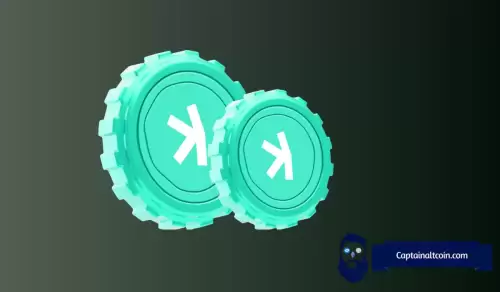 |
|
 |
|
 |
|
 |
|
 |
|
 |
|
 |
|
 |
|
 |
|
 |
|
 |
|
 |
|
 |
|
 |
|
 |
|

Solana (SOL) has emerged from one of its most turbulent periods to date.
Stress-tested in Q1 2025 by an unprecedented wave of memecoin launches on platforms like Pump.fun, the network faced both extraordinary transaction volume and congestion. It saw tens of thousands of new tokens like TRUMP (for former President Donald Trump) and MELANIA (for Melania Trump) launching in just a few months, bringing billions of dollars on-chain through millions of transactions.
It was a real test of how Solana would perform under pressure. But rather than faltering, the network adapted and improved. From this intense period of on-chain activity, a more resilient blockchain has emerged—one that’s increasingly being seen not as a “memechain” but as a foundational layer for stablecoins and real-world payments.
The memecoin stress test
Memecoins, despite their speculative nature, served a valuable purpose: they pushed Solana’s infrastructure to the limit.
During the January peak, tokens like TRUMP and MELANIA helped drive Solana’s decentralized exchanges to a near-record $40 billion in 24-hour trading volume. Together, these two meme tokens reached a combined fully diluted valuation (FDV) of nearly $70 billion—larger than many publicly listed companies. This sent the daily trading volume on Pump.fun past the $5 billion mark, which is higher than Coinbase.
This onslaught did expose certain issues: validators hit compute limits, RPCs throttled, and trading bots struggled to keep pace. But, in response, Solana’s core developers shipped staking-weighted Quality-of-Service to prioritize honest traffic, QUIC networking fixes to reduce packet loss, and advanced priority fees so users could cut the line transparently.
In short, the network’s foundational thesis—that better hardware leads to better scalability—held up well under pressure.
Stability over speculation
Now that the memecoin tide has ebbed, the real opportunity is clear. Stablecoins—reliable, dollar-pegged digital cash—are rapidly growing on Solana. The network’s outstanding stablecoin float is now at an all-time high of around $12.7 billion, which is more than double the figure from a year ago and puts it within striking distance of Ethereum’s peak.
Why the influx? Solana is the first L1 that combines sub-second finality, fractions-of-a-cent fees, and battle-tested throughput.
There are no roll-ups, there’s no waiting around, micro-payments are finally economical, and throughput has been thoroughly proven during the memecoin frenzy of Q1. The chain is ready for money markets and payment rails—exactly what mainstream users and regulators require.
Real-world rails are already here
Take USDG, for example. This stablecoin, issued by Paxos Digital Singapore and designed to be compliant with the Monetary Authority of Singapore’s upcoming stablecoin regulatory framework, is now live on Solana, giving fintech firms a way to transfer US dollars globally in seconds for a fraction of a cent. Cheap, final settlement at internet speed is no longer just a theory, but a reality.
And then there’s Franklin Templeton’s OnChain US Government Money Fund. One of the world’s largest asset managers is tokenizing money-market shares on Solana because the chain’s throughput and custody tooling already feels familiar to traditional finance operations teams.
Collectively, these heavy hitters aren’t chasing memes; they’re chasing the $20 trillion global payments market that Statista pegs for 2025. If even 1% of that lands on Solana, it would eclipse today’s entire crypto market cap—and it’s the stability of these new rail-builders that will decide the volume.
Firedancer: The next upgrade
There’s more good news in the pipeline, too. Later this year, Jump Crypto’s independent validator client, Firedancer, lands on mainnet, which promises 50x faster block propagation and a design ceiling of 1 million transactions per second.
For stablecoin issuers and payment providers, Firedancer could be a game-changer: it offers deterministic finality, even during Black Friday-level transaction spikes. For Solana builders, meanwhile, the upgrade is the green light to aggregate liquidity across a wide range of automated market makers, order-book DEX, and RFQ venues without any throughput constraints.
A call to builders
Memecoins were a stress test. Stablecoins are the real opportunity. For developers working on wallets, payment apps, remittance tools, or trading infrastructure, Solana is optimized and ready, and now the next phase begins. In fact, it wouldn’s be too far-fetched to say that this is what the blockchain has been preparing for all along.
Where memecoins generated attention, stablecoins promise adoption. Solana has shown it can handle volume, and with Firedancer on the horizon, it
免责声明:info@kdj.com
所提供的信息并非交易建议。根据本文提供的信息进行的任何投资,kdj.com不承担任何责任。加密货币具有高波动性,强烈建议您深入研究后,谨慎投资!
如您认为本网站上使用的内容侵犯了您的版权,请立即联系我们(info@kdj.com),我们将及时删除。
-

-

- IOTA,云采矿和环保的加密货币:纽约投资者的拍摄
- 2025-08-06 09:18:27
- 在加密货币世界中探索IOTA,云采矿和环保实践的交集。发现像IOTA矿工这样的平台如何塑造数字资产投资的未来。
-

- Kaspa(KAS)价格预测:8月6日 - 它会破裂吗?
- 2025-08-06 09:00:00
- 分析Kaspa在8月6日的价格运动,检查了主要的支持和抵抗水平,并探索了潜在的看涨和看跌方案。
-

-

- PI网络,持有人和市场动荡:导航加密风暴
- 2025-08-06 08:03:20
- 在市场波动中分析PI网络持有人的弹性以及对加密空间的更广泛含义。
-

-

- 超流动性API故障:退款和警告性故事
- 2025-08-06 08:00:15
- Hyperliquid最近的API问题引发了辩论:退还用户的“基本礼节”或“超越”?另外,仔细观察炒作的恢复和挥之不去的谨慎。
-

-

- Dogecoin Price Outlook 2025:吠叫正确的树?
- 2025-08-06 08:00:00
- Dogecoin是否将到2025年卷土重来?分析专家预测和市场趋势,以预测Doge的潜在复兴。






























































